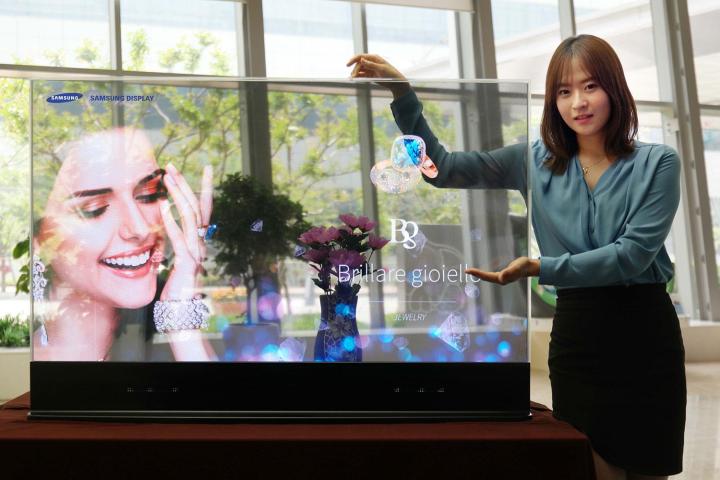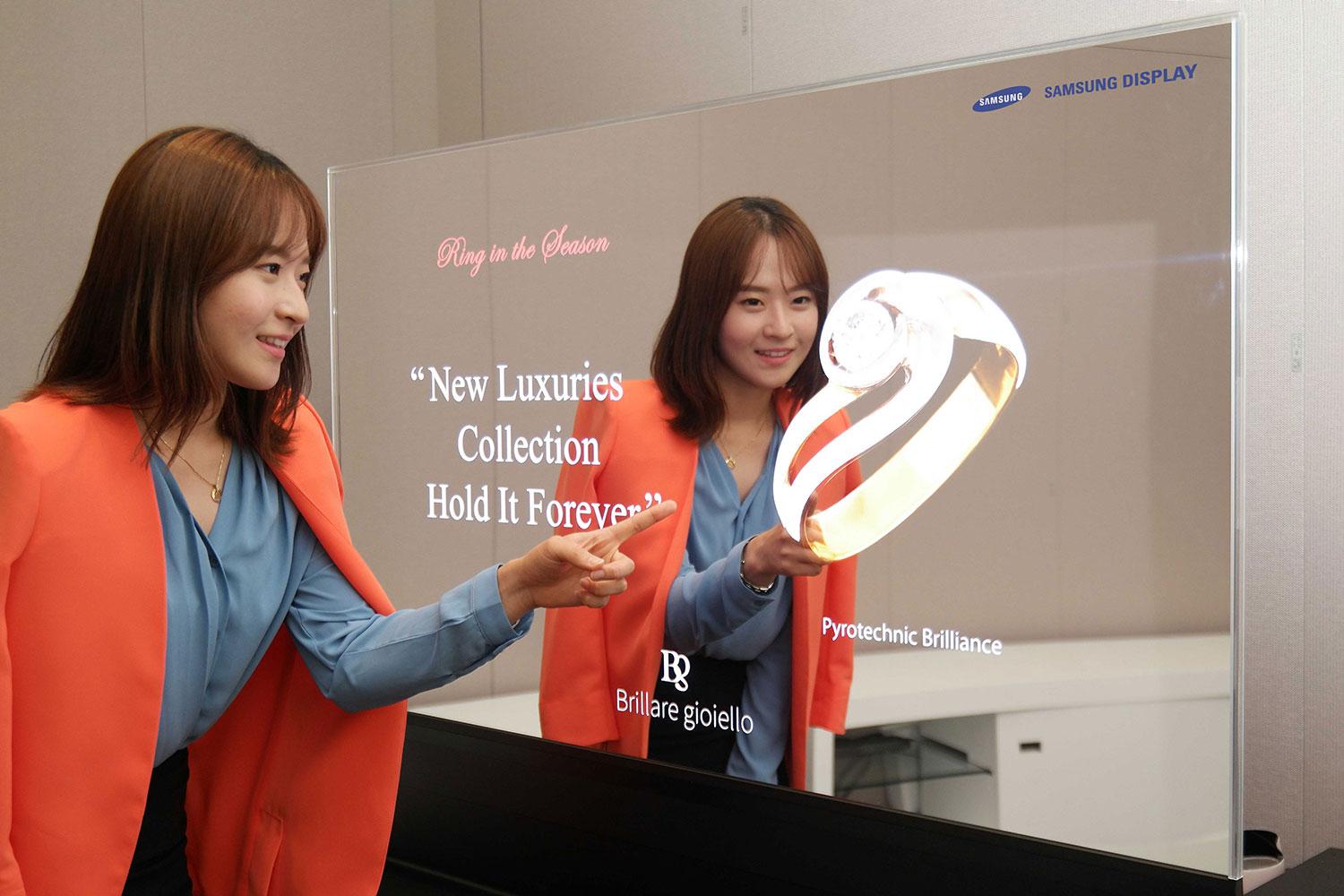
Last year Samsung put OLED aside in its consumer televisions in favor of Quantum Dot LCD technology, and that might still be the case, as these new displays are meant more for commercial use. While looking at your TV only to find yourself staring back might not be convenient, these are perfect for retail applications, looking like something plucked out of a shopping mall from the future.
The new displays integrate Intel Real Sense technology which enables users to control interfaces via gestures rather than traditional tactile input. Combine this control with the new clear and mirrored designs and there are a whole lot of possible applications, but Samsung is currently focusing on “making the consumer purchasing experience more visually engaging,” according to a press release issued today.
One possible use outlined is a “self-modeling” wardrobe which could allow shoppers to see how clothes might look on them without actually having to try them on. Walking through a store, shoppers might even look into a mirror and find themselves wearing a different shirt without any effort on their part.

In the future, Samsung says that this type of mirror could eventually replace mirrors in your home as well, “providing digital information services to sophisticated consumers in the same space where they now just have a traditional mirror.” Time for a haircut? Your mirror lets you know. There’s no word yet on whether or not it will tell you if you’re the fairest of them all, however.
For the transparent display, Samsung has more traditional tasks in mind — replacing traditional LCD signage, for example — but it certainly is still impressive to behold.
Both models shown were 55 inches in size and offer some impressive specs. Samsung claims both the mirrored and transparent models show an increased color gamut over comparable LCDs (100 percent vs 70 percent of NTSC), and the mirrored model is said to have both better contrast and a faster response time than mirror LCDs. Since OLED displays don’t require back lighting, they’re more versatile when it comes to integration with new types of designs, and can also be remarkably thin.
While Samsung might not be focusing on OLED for consumer use right now, this latest showcase — perhaps a response to a similarly futuristic OLED demonstration from LG a few weeks back –proves that the company is still very hands-on with OLED display technology. These panels are ready to appear in retail locations right now, but there is currently no indication of how widely available they will be.


